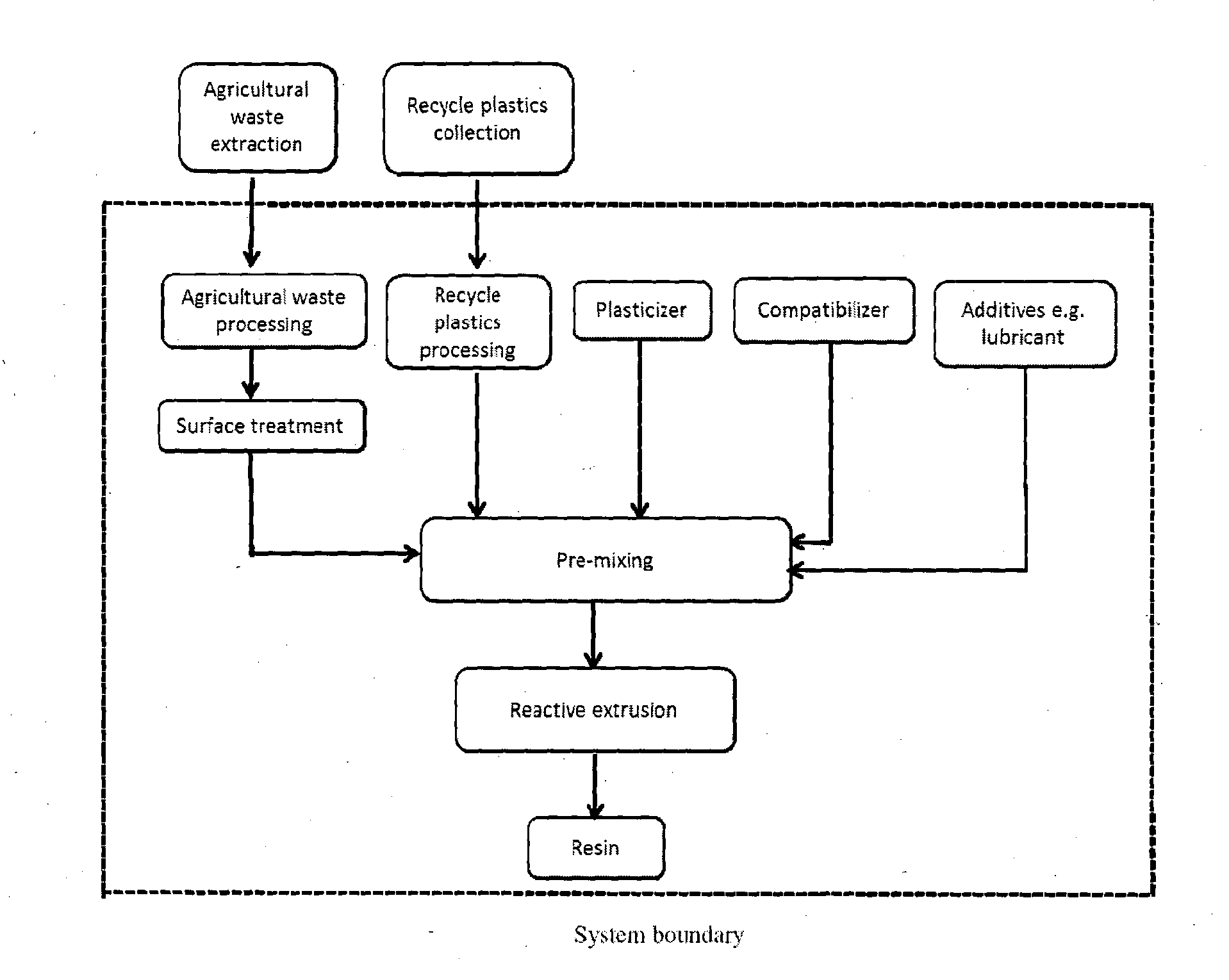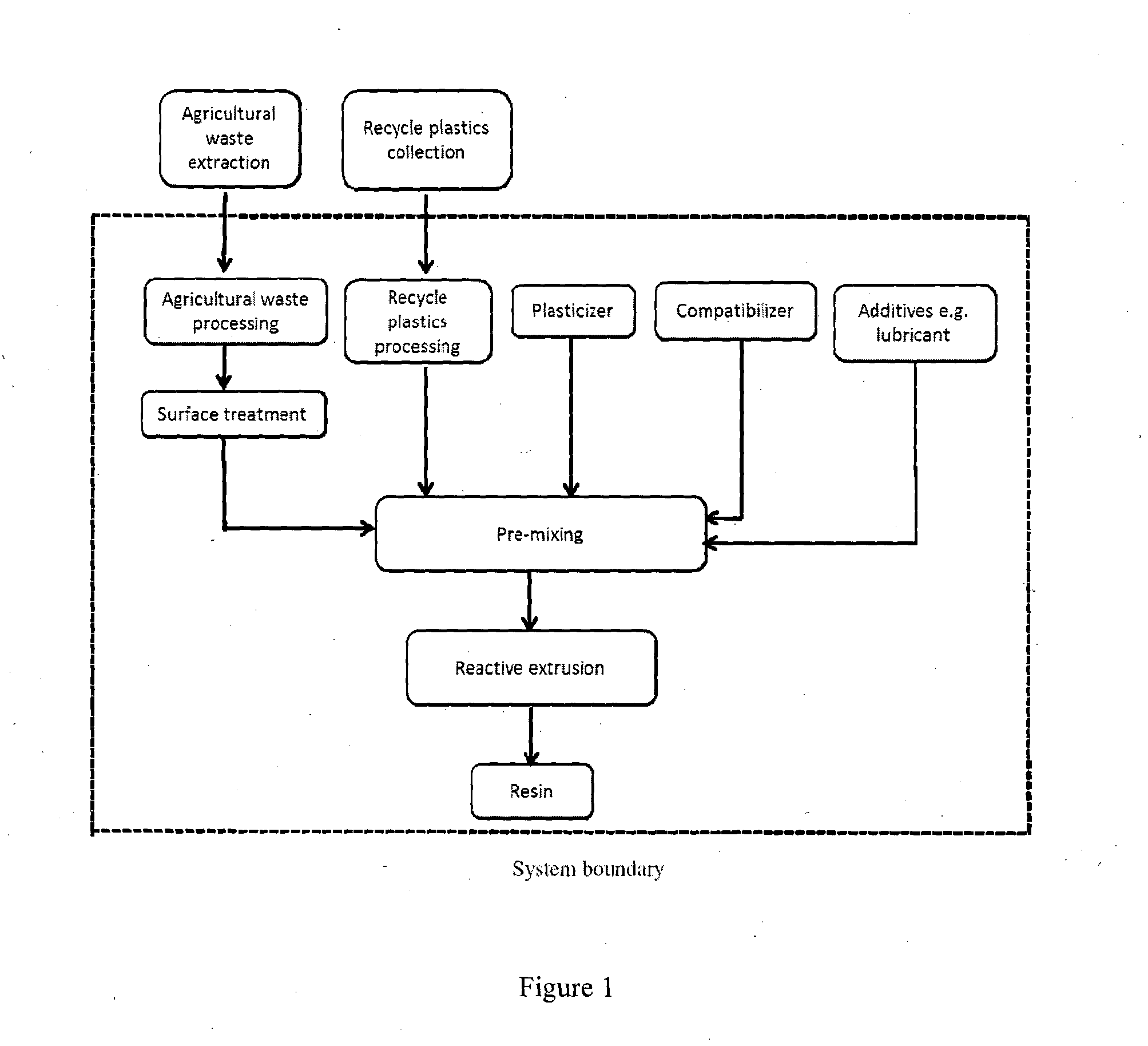Thermoplastic starch composition derives from agricultural waste
a technology of agricultural waste and composition, applied in the field of thermoplastic starch composition, can solve the problems of poor mechanical strength, high water solubility, failure to achieve the desired plasticity and degradability,
- Summary
- Abstract
- Description
- Claims
- Application Information
AI Technical Summary
Benefits of technology
Problems solved by technology
Method used
Image
Examples
example 1
[0038]In order to prepare sample 1, the starch residue (waste) is pre-treated or functionalized with alkyl amine and esters blends in the presence of dicumyl peroxide in a high speed mixer that are able to be heated up to 120° C. for a period of 10 min. After this pre-treatment process, Di-substituted glycerol will be added into the starch residue and mixed for 5 min prior to the addition of other components like calcium stearate, butylated hydroxytoluene, acetate copolymers and PP to be mixed for a further 5 min before discharging the mixed composition into a gravimetric feeder of a twin screw extruder for reactive extrusion / compounding process to take place. The setting of the temperature for reactive extrusion and compounding process is 140-170° C. for the barrels and the screw speed is 200 rpm. Resins obtained from the twin screw extruder is then dried at 80° C. for a minimum of 2 hrs before sheet extrusion using a single screw extruder with an L / D of 25 to produce extruded shee...
example 2
[0041]Carbon footprint of sample 1 in example 1 (from cradle to polymer factory gate) was calculated according PAS 2050 [1]. The PAS 2050 allows immaterial emissions to be excluded i.e. any single source resulting in less than 1% of total emissions. However, the total proportion of immaterial emission sources cannot exceed 5% of the full product carbon footprint. Hence the carbon footprint for surface modifier, catalyst, compatibilizers and other additives have been excluded.
[0042]For the starch residue, calculation include diesel used for the transportation from supplier (i.e. 13 kg of diesel for a 26 km distance) as well as electricity used for the processing e.g. drying and pulverization of starch residue (i.e. 0.26 kWh / kg of starch residues). The energy use for the cultivation of the plant where the starch come from is excluded as the present invention is using only the waste or starch residue from the starch production.
[0043]For the recycle PP, calculation include diesel used f...
PUM
| Property | Measurement | Unit |
|---|---|---|
| temperature | aaaaa | aaaaa |
| temperature | aaaaa | aaaaa |
| particle size | aaaaa | aaaaa |
Abstract
Description
Claims
Application Information
 Login to View More
Login to View More - R&D
- Intellectual Property
- Life Sciences
- Materials
- Tech Scout
- Unparalleled Data Quality
- Higher Quality Content
- 60% Fewer Hallucinations
Browse by: Latest US Patents, China's latest patents, Technical Efficacy Thesaurus, Application Domain, Technology Topic, Popular Technical Reports.
© 2025 PatSnap. All rights reserved.Legal|Privacy policy|Modern Slavery Act Transparency Statement|Sitemap|About US| Contact US: help@patsnap.com



